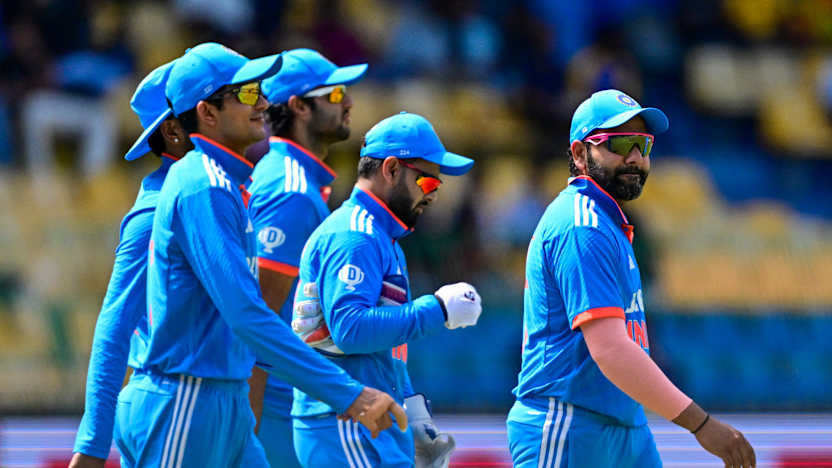 |
|
The Indian cricket team's selection for the Champions Trophy has sparked discussion regarding the captaincy dynamic, player selection, and the overall leadership structure within the team. Rohit Sharma's clarification regarding his relationship with coach Gautam Gambhir is a crucial aspect of this conversation. Sharma emphasizes a clear understanding and mutual trust between him and Gambhir, stating that Gambhir trusts his on-field decisions. This statement aims to dispel any concerns about potential conflicts or confusion arising from the presence of multiple strong leadership figures within the team environment. The emphasis on trust highlights the importance of a cohesive leadership structure for the team's success. The seamless collaboration between the captain and coach is vital for effective strategic planning and in-game decision-making. The success of the team hinges on their ability to work together harmoniously and make quick, decisive calls during matches.
The retention of Shubman Gill as vice-captain despite the return of several senior players is another noteworthy point. Chief selector Agarkar justifies this decision, highlighting that Gill's vice-captaincy role in Sri Lanka provides a basis for continuity. Furthermore, Agarkar emphasizes that feedback from within the dressing room plays a significant role in these choices. This suggests a commitment to considering team dynamics and internal assessments when making selection decisions. The decision to retain Gill also underscores the importance of nurturing young talent and gradually integrating leadership roles within the team. By retaining Gill, the selectors are also keeping their options open, acknowledging that leadership opportunities may arise unexpectedly, necessitating a pool of capable leaders ready to step up when needed. This strategic approach reflects a long-term perspective on team development, emphasizing the importance of succession planning for leadership positions.
The selection process itself raises important questions about the criteria used and the challenges involved. The scarcity of state team leaders presents a significant hurdle for the selectors. Identifying and nurturing future leaders is a key element of the team's long-term success. The selectors are actively searching for individuals possessing leadership qualities, indicating a proactive approach to talent identification and development. The emphasis on leadership suggests that the selection panel prioritizes not only individual skill but also the potential for future leadership roles within the team. This approach reflects a broader strategy focusing on developing well-rounded players who can contribute both individually and as team leaders. The challenges of finding and cultivating leadership within the team highlight the need for ongoing evaluation and development programs to ensure a steady stream of capable leaders for future generations of Indian cricket. This ensures team stability and the ability to adapt to changing circumstances within the cricketing world.
The omission of certain players, notably the absence of Nair, likely fueled discussions surrounding selection criteria and the balance between experience and emerging talent. The decision to include or exclude specific players is a complex process, influenced by factors such as form, fitness, team composition, and future plans. The selectors need to carefully consider various aspects of player performance and potential, while also taking into account team dynamics and strategic needs. The decisions made will undoubtedly shape the future direction of the team and influence its performance in upcoming tournaments. The selection process itself is a crucial aspect of team management, shaping not only the immediate composition of the team but also impacting the long-term development and success of the squad. The ongoing dialogue and analysis surrounding these decisions underscore the importance of transparency and clear communication in selection processes. The debate surrounding these decisions allows for a deeper understanding of the selection criteria and helps to ensure accountability and better decision-making in the future.
